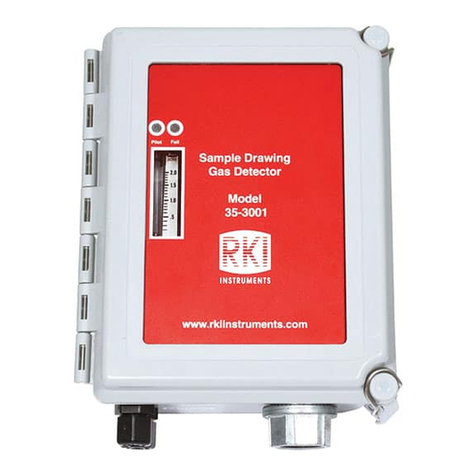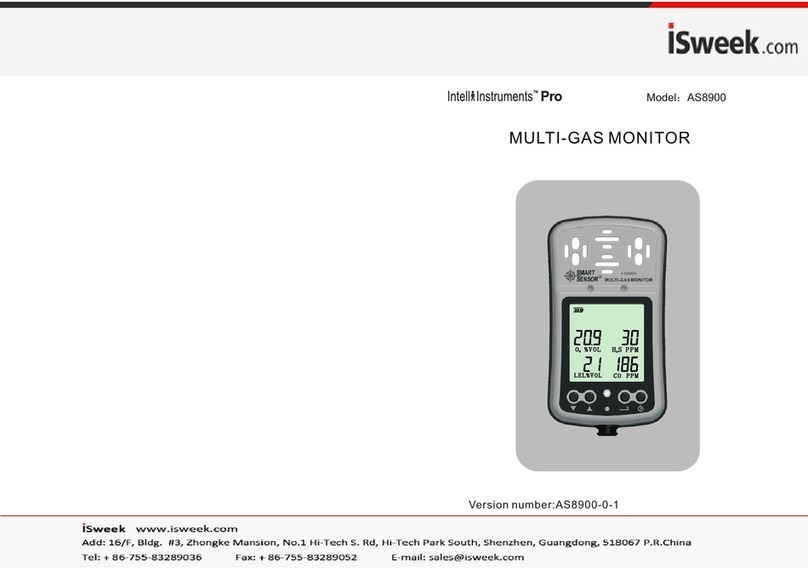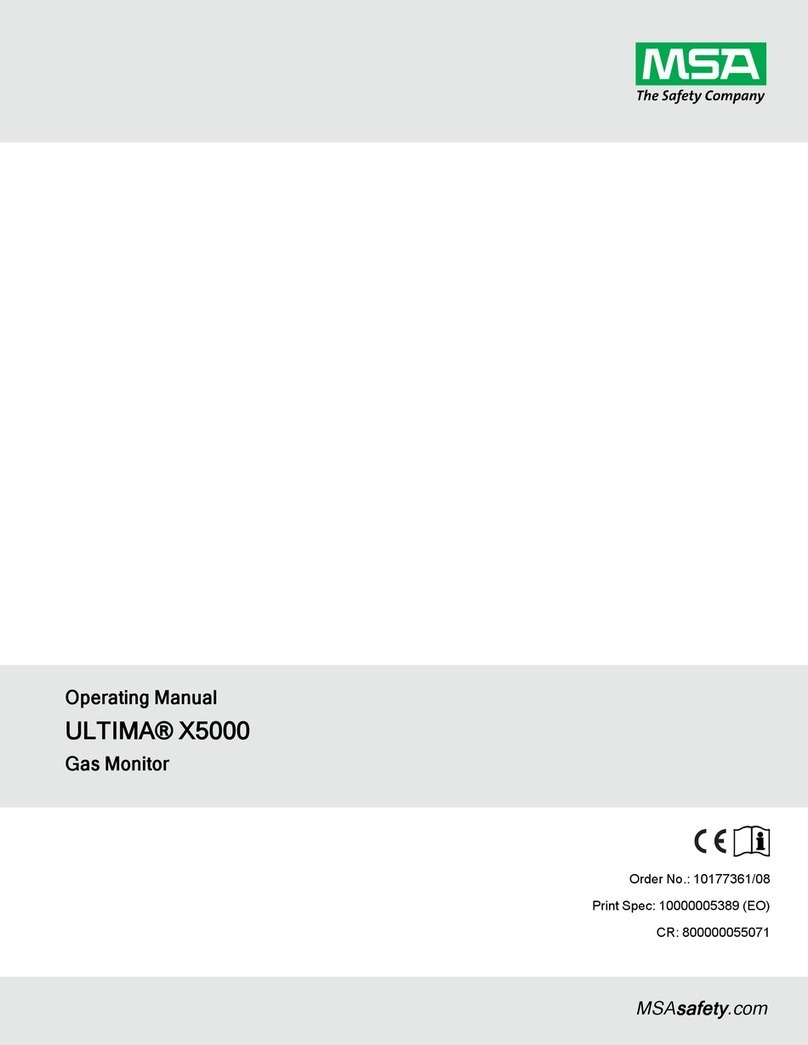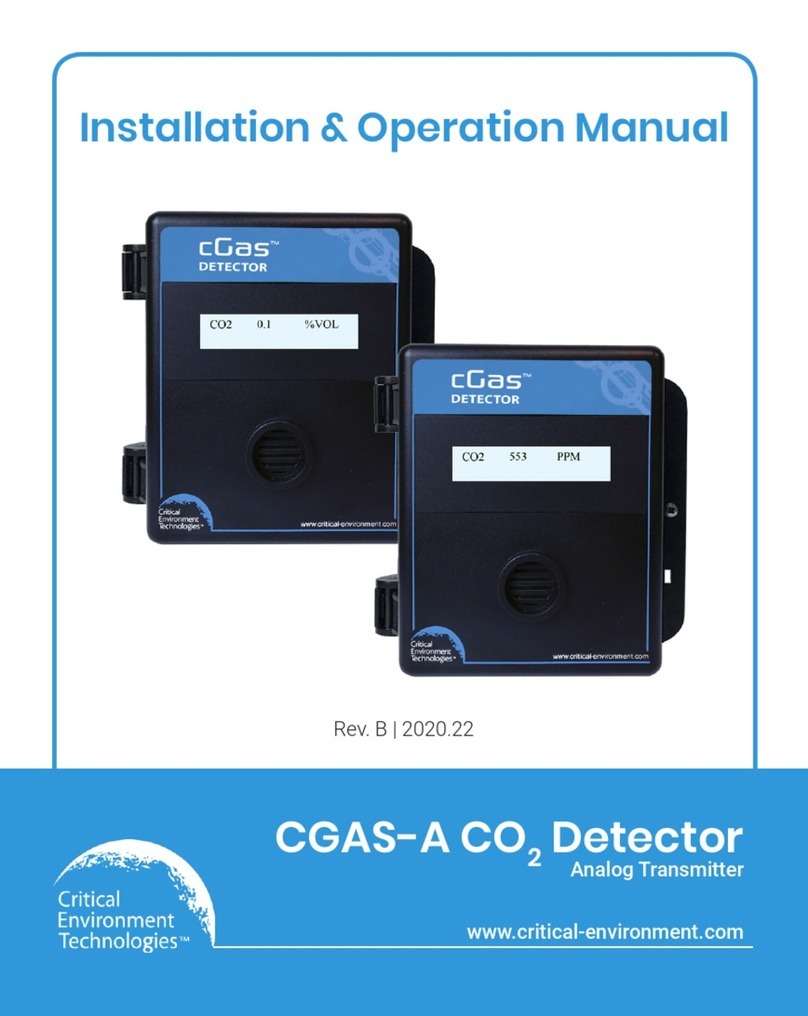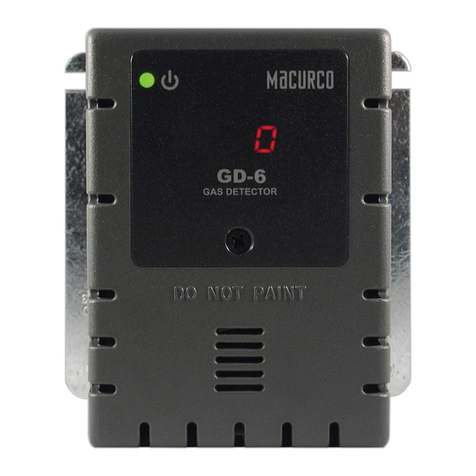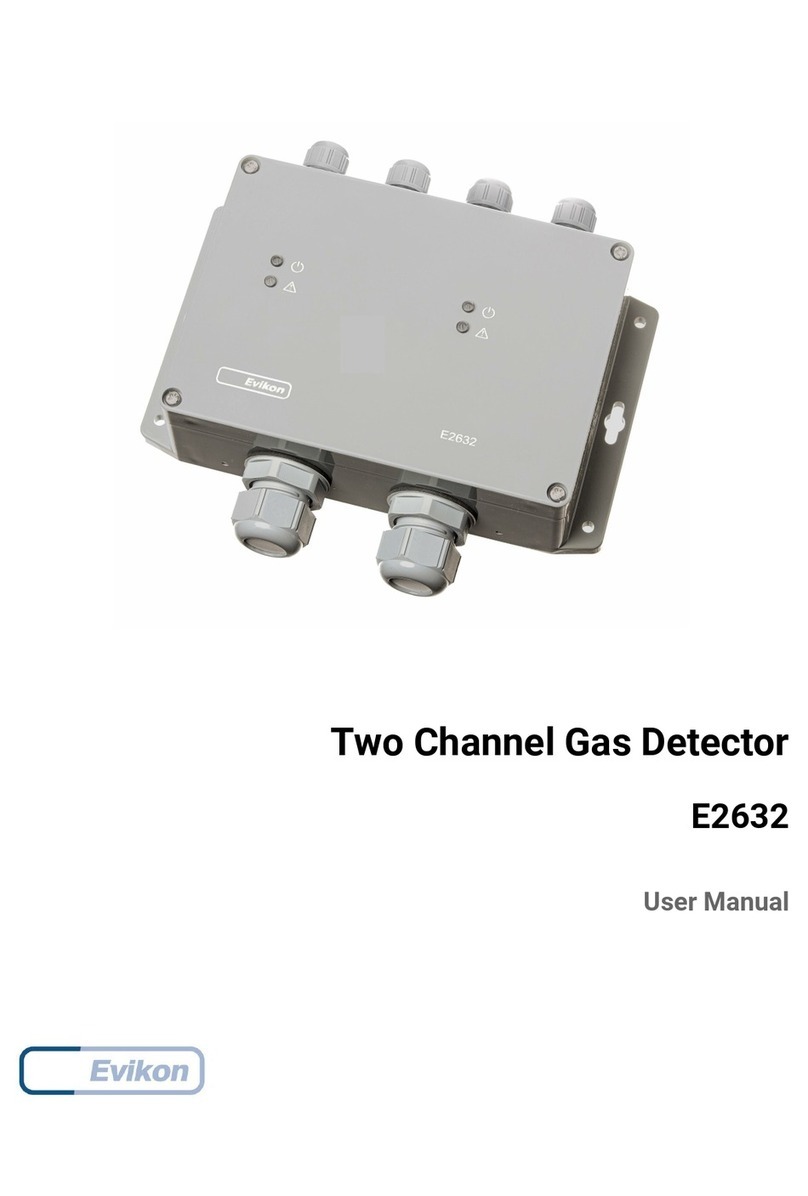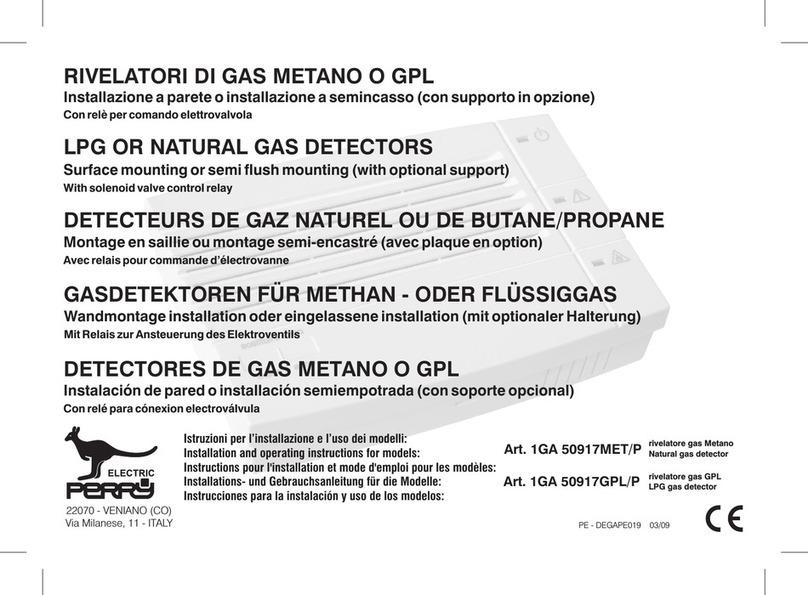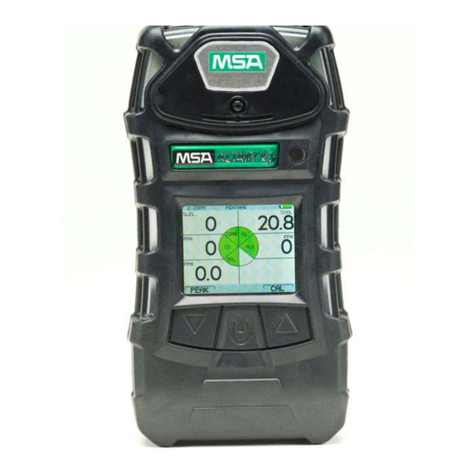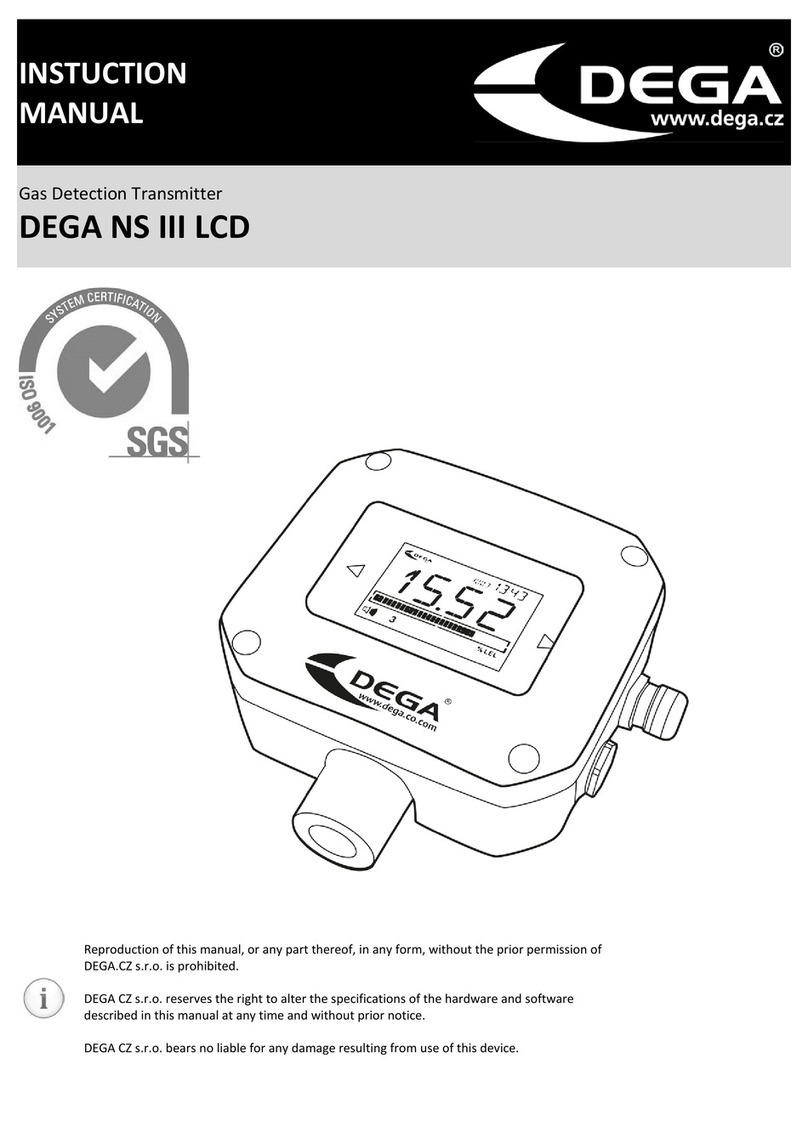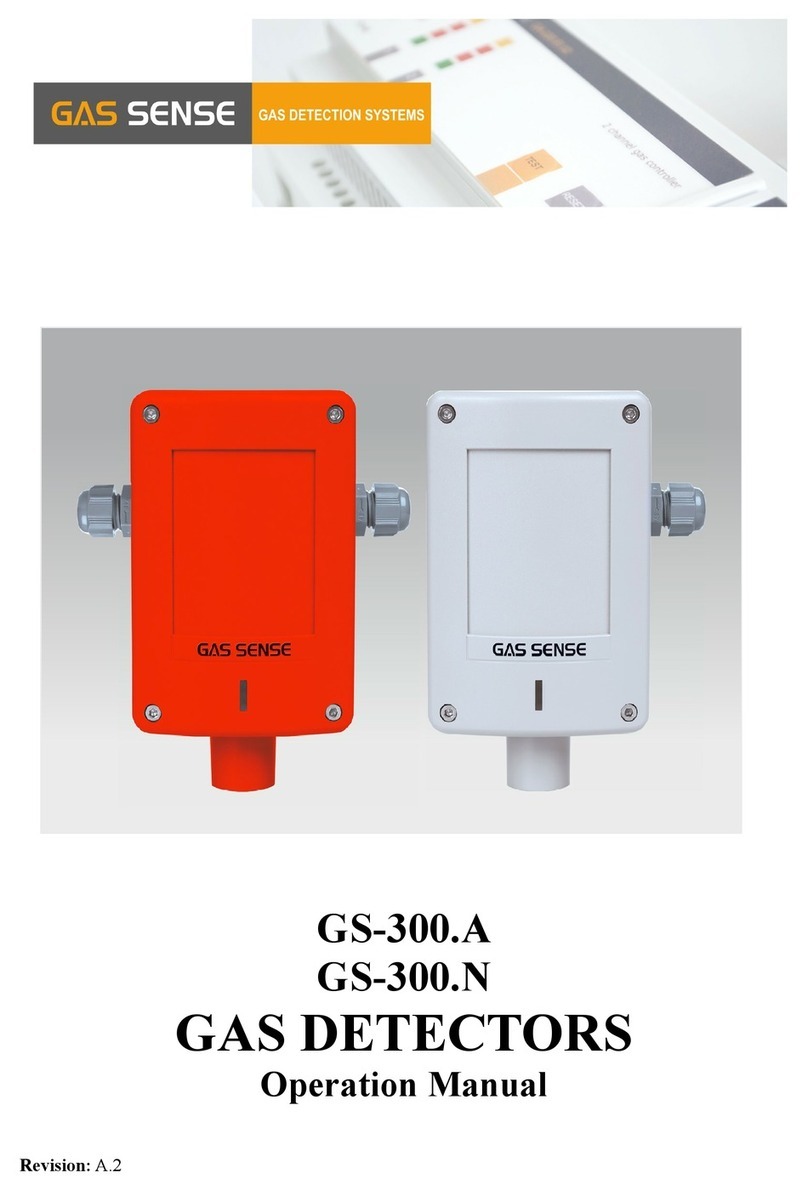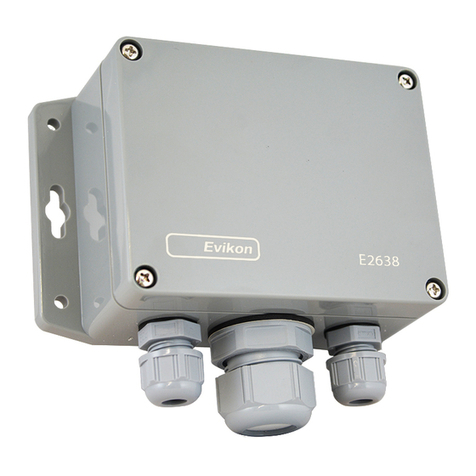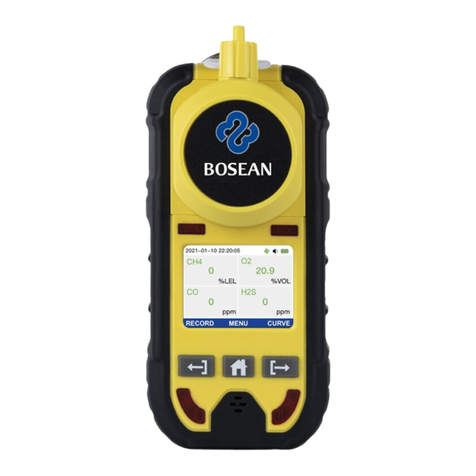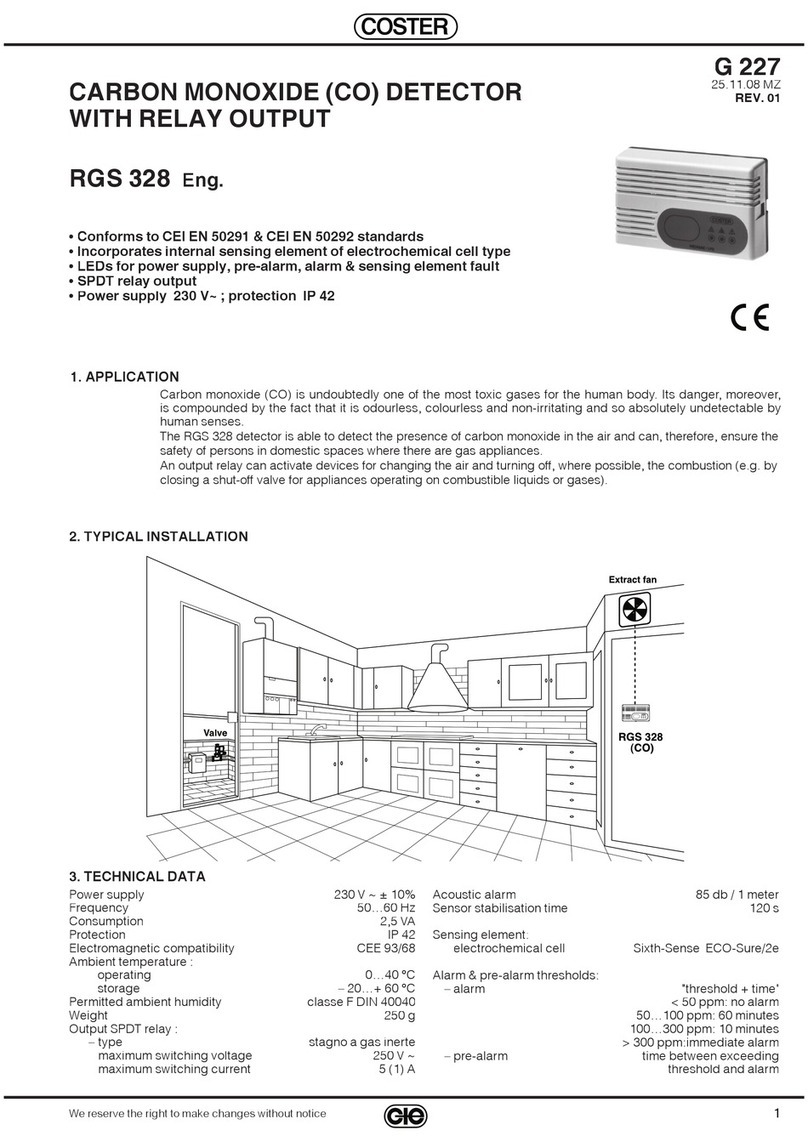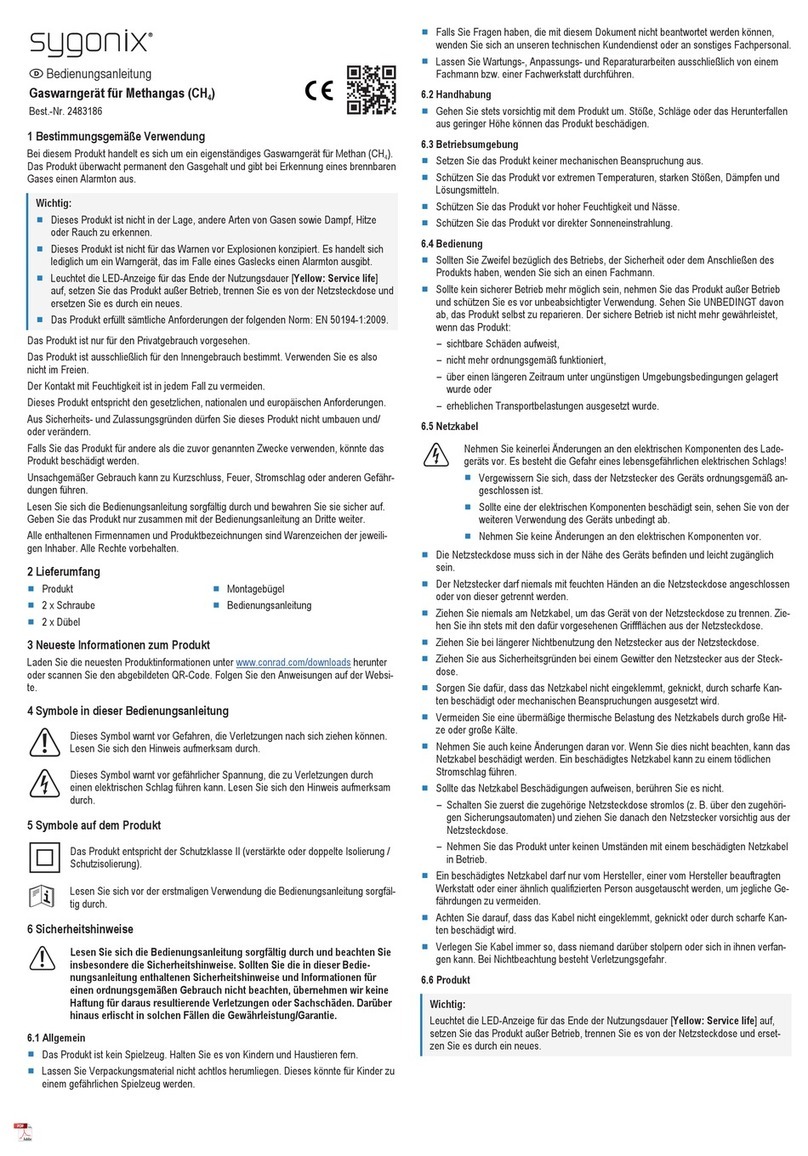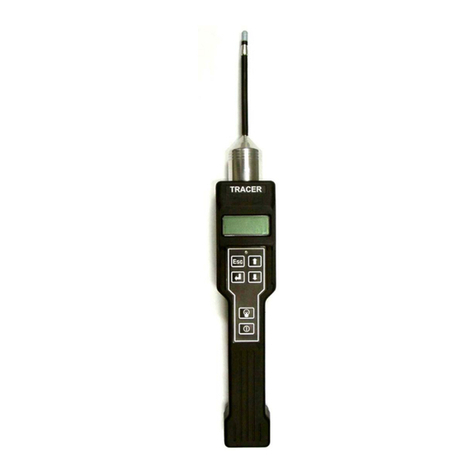
Commissioning and operation
To ensure proper commissioning it is absolutely necessary that you read this
operating manual, including the safety instructions, completely and carefully!
Remove the cover (7)
Switch on the gas-leak detector by sliding the ON/OFF button (5) to the position “ON”.
The device produces a short beep. The red display LED (2) shines simultaneously
then the green LED (3) will shine. If the green LED does not shine, you will have to
exchange the batteries
If the device is switched on again shortly after having been switched off, the
switch-on procedure may deviate from the procedure described here; the device
may, for example, produce no beep tone or the red LED may not shine etc. This is
why, after switching it off, you should wait 60 seconds before switching the device
back on.
When the beep tone has stopped and the green display LED (3) shines, the device is
ready for operation. In order to detect any possible gas leak, hold the device with the
gas sensor (1) close to the object which is to be tested.
If the gas-leak detector detects leaking gas, this will be indicated by the shining of the
red display LED (2). A beep tone will also be produced. The device will terminate this
alarm status as soon as the concentration of gas falls below the detectable limit
value.
While using the gas-leak detector make sure that you pay attention to the
different behavior of different gases; liquefied gas, for example, is heavier than
air and settles on the ground. This is why the highest concentration of gas is
close to the ground. For more information ask at the relevant gas power plant
or ask an expert. If the flow rate of the gas is too high this may damage the gas
sensor. For this reason you should never place the gas sensor directly in a
strong air/gas current.
Static discharge
The STATIC display LED (4) will illuminate for a short period of time as soon as the
device detects a static discharge. A static charge from the human body is often
created in a dry environment and when synthetic materials are rubbed. This charge
can discharge with a spark while touching an earthed object, for example a heater.
At the bottom of the device, a small wire can be seen which projects out of device.
This wire is the “aerial” which is necessary for the detection of the discharge.
Before a gas-detection operation, touch the small wire at the bottom of the device and
touch an earthed object, for example a radiator, with your other hand. If you are
statically charged, the STATIC display LED (4) will shine for a short period of time.
This measurement must not be carried out in the same room in which the gas
detection is carried out, since leaking gas may be ignited by the sparks created.
